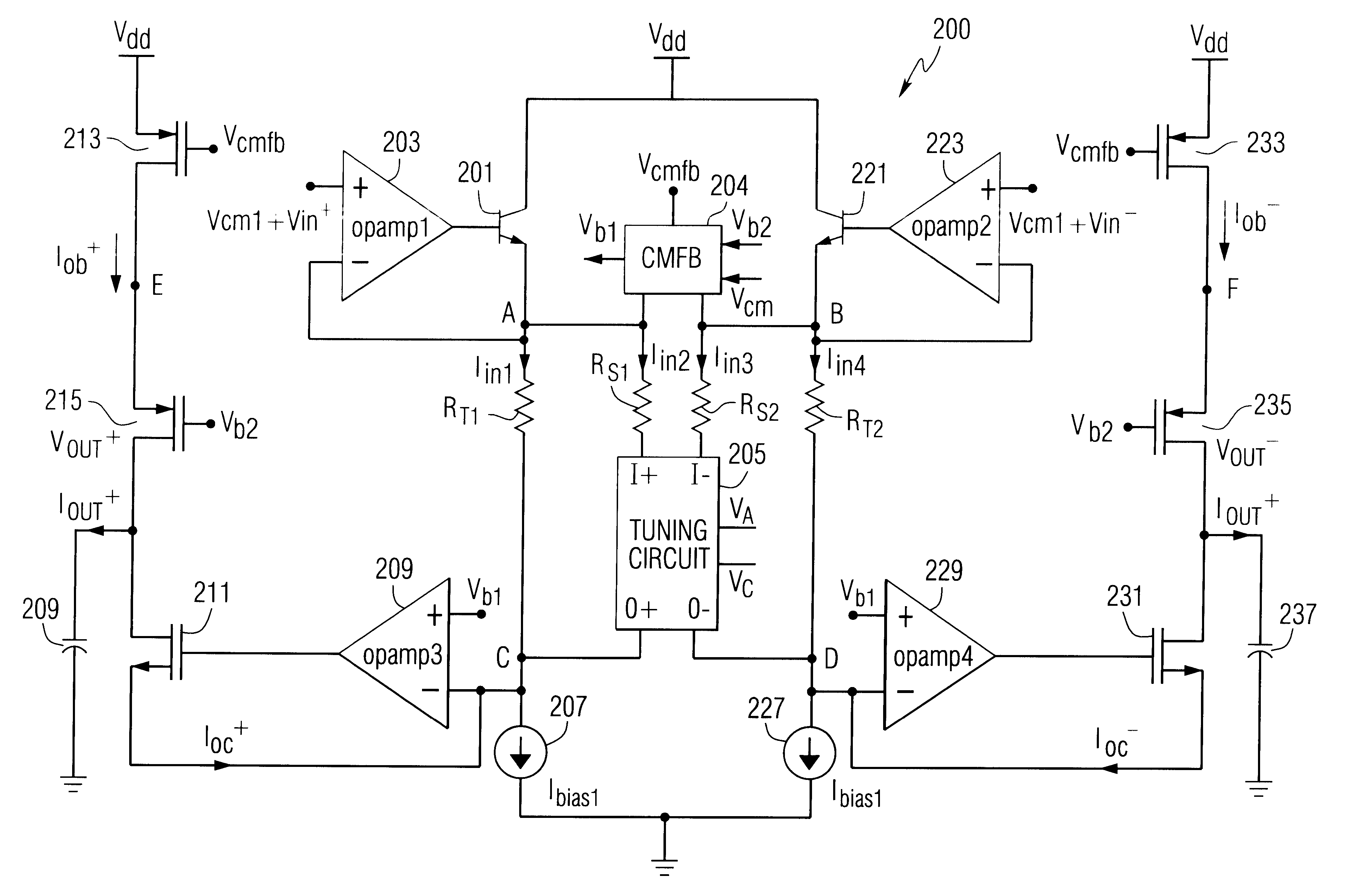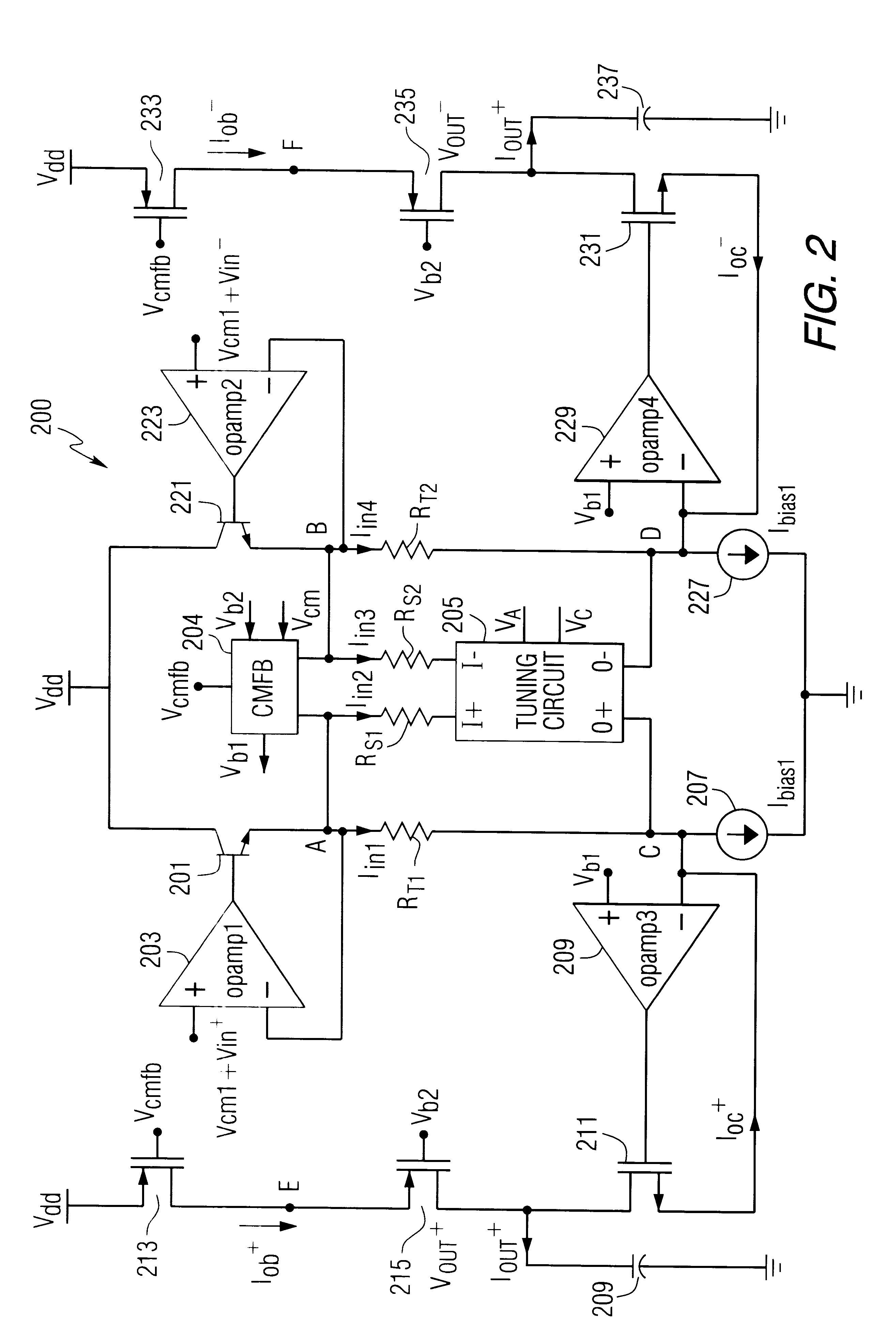Ultra linear high frequency transconductor structure
a high frequency transconductor and linear technology, applied in the direction of dc-amplifiers with dc-coupled stages, amplifiers with semiconductor devices/discharge tubes, dc-amplifiers with different amplifiers, etc., can solve the problems of high power, or alternatively, low power at the expense of poor linearity
- Summary
- Abstract
- Description
- Claims
- Application Information
AI Technical Summary
Problems solved by technology
Method used
Image
Examples
Embodiment Construction
FIG. 1 is a block diagram of a simplified transconductor block 100 with capacitive load C.sub.OUT that is used to illustrate operation of a transconductor according to the present invention. The transconductor block 100 illustrates one side of a transconductor circuit, which typically receives a differential input and provides a differential output. As described further below, the transconductor block 100 may be used as a building block in which it is combined with other, similar transconductor circuits to implement amplifiers, filters, etc., as known to those skilled in the art. The transconductor block 100 is associated with and coupled to a bias circuit 102, a common mode feedback circuit (CMFB) 103 and an adjust circuit 104. The bias circuit 102, the CMFB 103 and the adjust circuit 104 may each be provided locally or globally in which each is associated with one or more transconductor blocks.
A power supply voltage, referred to as V.sub.dd, is provided to an input circuit 101 of ...
PUM
 Login to View More
Login to View More Abstract
Description
Claims
Application Information
 Login to View More
Login to View More - R&D
- Intellectual Property
- Life Sciences
- Materials
- Tech Scout
- Unparalleled Data Quality
- Higher Quality Content
- 60% Fewer Hallucinations
Browse by: Latest US Patents, China's latest patents, Technical Efficacy Thesaurus, Application Domain, Technology Topic, Popular Technical Reports.
© 2025 PatSnap. All rights reserved.Legal|Privacy policy|Modern Slavery Act Transparency Statement|Sitemap|About US| Contact US: help@patsnap.com



